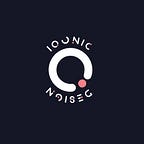8 Factors To Consider In Creating An Insightful Blog Dashboards In 2022 | Iqonic Design
In the early days of blogging, people would write about anything that came to mind. Over time, however, people have come to realize that in order to be successful, they need to focus on a niche and provide valuable insights. The same concept applies to creating insightful blog dashboards. In order for your dashboard to be successful, you need to consider a number of different factors.
In this blog post, we will outline 8 of those factors.
Developers, Designers & Creative agencies have you ever been caught up with the below demands?
1) Dashboard Purpose
When creating a dashboard, there are many factors to consider. The most important factor is the dashboard’s purpose- what information does it need to display? Dashboards can be divided into different categories based on their function.
The two most common categories are analytical and operational dashboards. They can then be further divided into narrower categories, like financial, sales, or even strategic dashboards.
There are several factors to consider when creating an insightful blog dashboard. The main goal is to provide important and relevant information to users in a way that is easy to understand and quickly digest. Operational dashboards need to be timely and help users to take action swiftly and efficiently.
2) Simple Form
In order to create an insightful blog dashboard, there are several factors to consider. One key goal is to provide information in a simple and easy-to-understand way.
This means presenting only the most relevant data and getting rid of any redundant information. Utilize white space, leaving just enough for the viewer to comprehend the data structure.
3) Consistency
- Keep your dashboard design consistent across all platforms.
- Establish a clear purpose for your dashboard and stick to it.
- Use a visual hierarchy to guide users through the data.
- Keep data relevant and up-to-date to maintain trustworthiness.
- Create a custom design for each dashboard to make data more accessible.
- Monitor various marketing channels for relevance.
4) Whitespace
When it comes to dashboard design, whitespace is key. It helps the reader to take a break from all the information and leaves more time to process the data. Using whitespace prevents a cluttered view, and helps you group related information visually. You might have heard it called negative space as well.
5) Color
When planning your dashboard design, consider color. Using the right colors and contrasts can help you make the information easier to read. Contrasting colors and avoiding gradients will help guide the reader through the information in an easy-to-understand way.
6) Fonts
There are many different fonts to choose from, but it’s best to stick with standard fonts that are easy to read. ALL CAPS text is hard to read, so avoid it.
Use a standard font size that is easy to scan and understand. Fonts like Times New Roman, Arial, Roboto, and Calibri work well.
7) Customization
Customers expect to find information that is relevant to their needs on their dashboard. The two techniques that help make this happen are personalization and customization.
Personalization is when you adhere to your client’s brand image by adding a logo, choosing appropriate chart colors, or adding specific labels to metrics or channels. Customization means tailoring the dashboard design to fit the specific data and user preferences of each individual client.
There are two main ways to approach dashboard customization: personalization and customization. Personalization means tailoring the dashboard to display relevant data and different key metrics, while customization entails rearranging the dashboard assets to present data in another way.
8) Datatable
Integrating datatables is a great way to present information for different items. They help with scalability, take up less space, and make the design process simpler. Tables and lists can be intimidating to work with, but most people are familiar with Microsoft Excel. Make sure to format tables and lists in a way that is easy to understand!
In the data table, is where you can try to showcase your number of blogs with their titles in a numerical way format.
Above were the head points, sound familiar right? Almost every client who wanted to have an amazing blogging dashboard will have asked for at least a couple of demands out of this 8 factors list.
So now the question is that yes! Clients do ask for this type of demand but how can you supply them with those demands. Well answer to the question is by giving them Hope through our finest Admin Dashboard — Hope UI.
